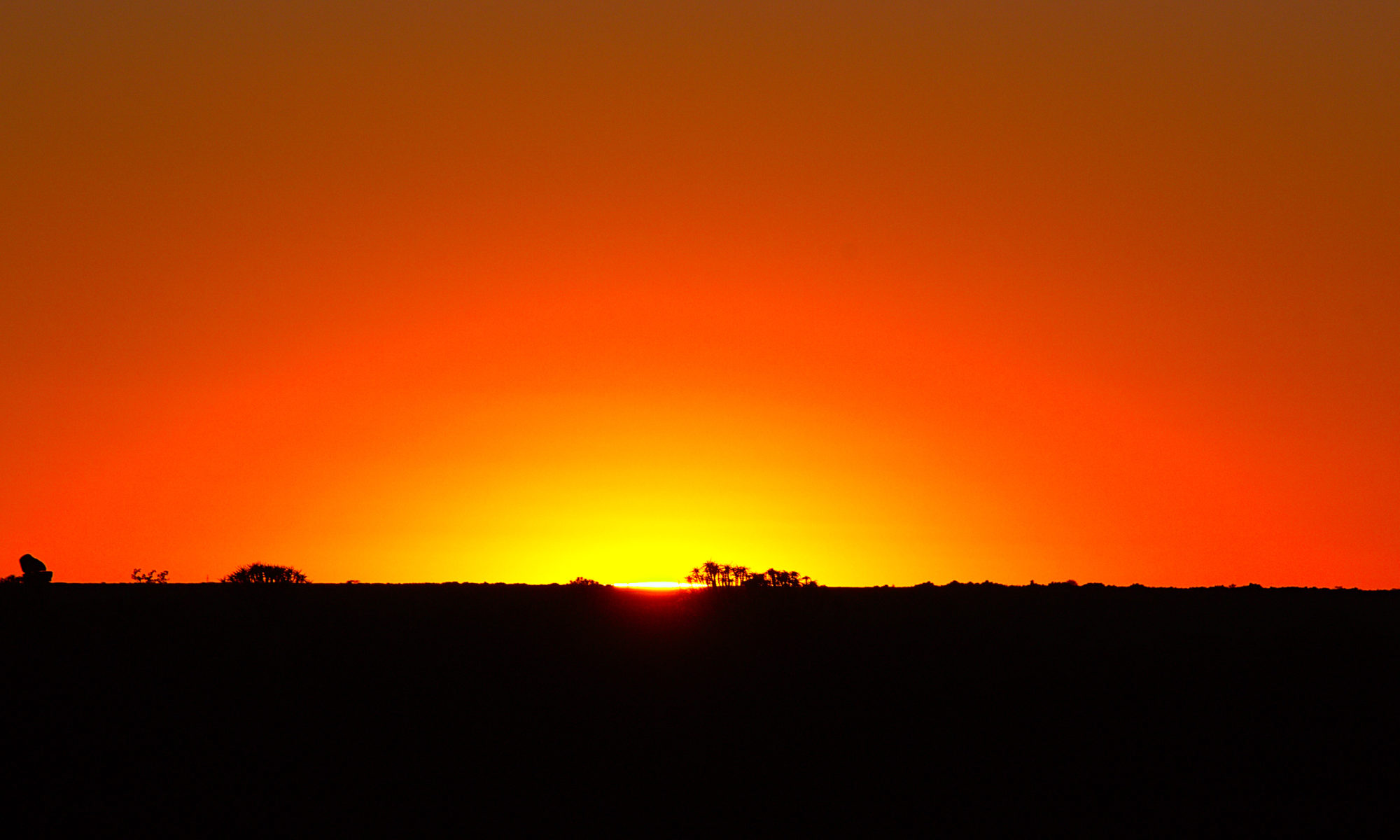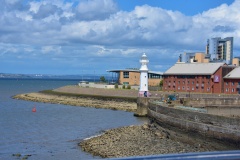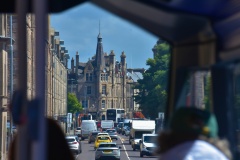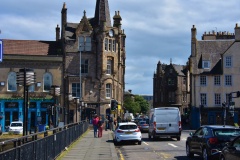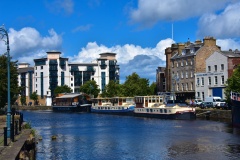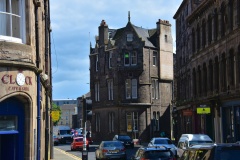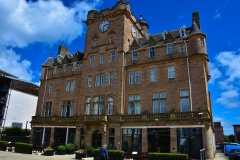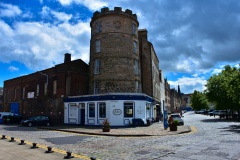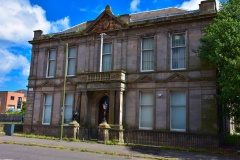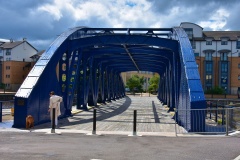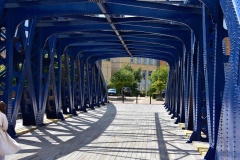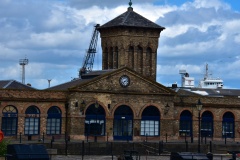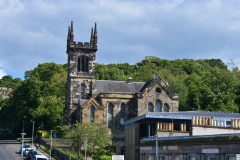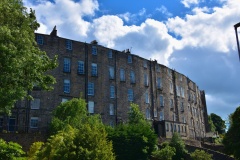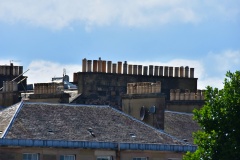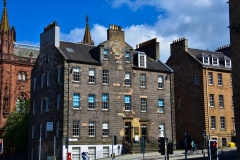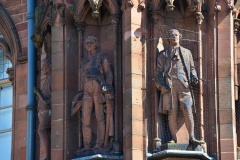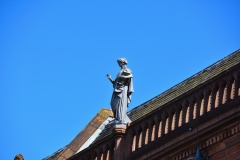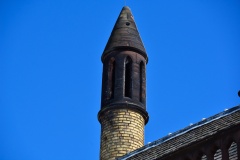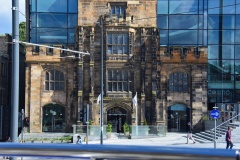Edinburgh: Scotland’s Majestic Capital of History, Culture, and Stone
Edinburgh is a city that fuses the grandeur of the past with the pulse of modern life. As Scotland’s capital, it stands as a beacon of education, literature, architecture, and political heritage — a city perched on volcanic rock, crowned by a medieval fortress, and wrapped in centuries of cultural legacy.
Divided between the cobbled charm of the Old Town and the Georgian elegance of the New Town, Edinburgh is a UNESCO World Heritage Site that rewards exploration at every turn. From ancient castles to hidden underground vaults, from Enlightenment thinkers to cutting-edge festivals, this city has something for every curious traveler.
A Brief History of Edinburgh
The area around Edinburgh has been inhabited since prehistoric times, but the city as we know it began to take shape around the 7th century AD, when it was part of the kingdom of Northumbria. Its name is thought to come from the Old English “Edwin’s Burgh” — a fort belonging to King Edwin of Deira.
By the 12th century, Edinburgh had emerged as a royal burgh under King David I and began developing around the imposing Edinburgh Castle. Positioned high on Castle Rock, the fortress provided both defense and a seat of power. The Royal Mile, the spine of the Old Town, became the main thoroughfare between the castle and Holyrood Abbey.
In the 16th and 17th centuries, Edinburgh became the heart of Scottish political life. The Act of Union in 1707 saw political power shift to London, but Edinburgh remained an intellectual hub. The city led the Scottish Enlightenment of the 18th century, producing giants like David Hume, Adam Smith, and James Hutton.
The New Town, with its neoclassical architecture and grand squares, was built in the late 18th and early 19th centuries to relieve the cramped conditions of the Old Town. Today, Edinburgh blends these two historic halves seamlessly, offering visitors a rare glimpse into multiple centuries in one walkable cityscape.
Things to See in Edinburgh
Whether you’re drawn to castles, museums, literary landmarks, or panoramic hikes, Edinburgh offers a captivating mix of sights and experiences.
1. Edinburgh Castle
Sitting atop an ancient volcanic plug, Edinburgh Castle dominates the city skyline. A fortress since at least the 12th century, the castle houses the Scottish Crown Jewels, the Stone of Destiny, and the National War Museum. Don’t miss the firing of the One O’Clock Gun from the ramparts each day.
2. The Royal Mile
Stretching from the Castle to the Palace of Holyroodhouse, the Royal Mile is lined with historic tenements, churches, shops, and hidden closes. Stops along the way include St Giles‘ Cathedral, John Knox House, and the Real Mary King’s Close — a preserved underground alleyway showing 17th-century life.
3. Holyrood Palace and Holyrood Park
The official residence of the monarch in Scotland, the Palace of Holyroodhouse lies at the foot of the Royal Mile. Behind it rises Arthur’s Seat, an extinct volcano offering one of the best hikes and views in the city. It’s part of the dramatic Holyrood Park, which feels a world away from the city center.
4. The National Museum of Scotland
This vast museum spans Scotland’s history from the age of dinosaurs to Dolly the Sheep. The building itself is a blend of Victorian architecture and sleek modern design. Free to enter and endlessly fascinating, it’s a must for all ages.
5. Calton Hill
A short climb from Princes Street, Calton Hill offers panoramic views of the Old and New Towns. It features several iconic monuments, including the National Monument (Scotland’s Parthenon), Nelson Monument, and the Dugald Stewart Monument — a favorite for photographers.
6. The Scottish Parliament and Dynamic Earth
Near Holyrood Palace lies the striking modern architecture of the Scottish Parliament. Just next door, Dynamic Earth is a family-friendly science center exploring the history of our planet, with interactive exhibits and immersive experiences.
7. The New Town
Built in the 18th century, Edinburgh’s New Town is a masterpiece of Georgian architecture. Stroll along George Street, explore the Scottish National Gallery, and take in the symmetry and scale of Charlotte Square and Princes Street Gardens.
The Geology of Edinburgh: A City Born of Fire and Ice
Edinburgh is one of the best places in the world to witness how geology shapes cities.
Volcanic Origins
The city is built on a dramatic volcanic landscape, sculpted by ancient lava flows and glacial erosion. The most prominent features include:
- Castle Rock: A volcanic plug formed 350 million years ago, this hardened lava core resisted erosion, making it the ideal site for a fortress.
- Arthur’s Seat: Part of a long-extinct volcano, it stands 251 meters high and offers stunning geological features like dolerite columns and glacial striations.
- Salisbury Crags: These cliffs are composed of igneous rock and were famously studied by James Hutton — the father of modern geology — in the 18th century. His observations here helped form the theory of deep time and uniformitarianism.
Ice Age Impact
During the last Ice Age, glaciers carved the surrounding terrain, creating valleys and the characteristic „crag and tail“ topography — with Castle Rock as the crag and the Royal Mile stretching out as the tail. This natural layout guided how Edinburgh’s Old Town developed, making its geological history fundamental to its urban design.
Festivals and Cultural Life
Edinburgh is internationally recognized as a city of festivals and creativity.
- Edinburgh International Festival: A celebration of music, theatre, and dance that brings world-class performers to the city each August.
- Edinburgh Festival Fringe: The largest arts festival in the world, known for comedy, drama, improv, and experimental performances.
- Hogmanay: Scotland’s famous New Year celebration, with torchlight processions, fireworks, and street parties.
- Beltane Fire Festival: A modern revival of ancient Celtic traditions celebrated each spring on Calton Hill.
The city’s literary heritage is equally strong — home to Sir Walter Scott, Robert Louis Stevenson, and J.K. Rowling. Edinburgh was the first UNESCO City of Literature and continues to host major literary events year-round.
Food and Drink in Edinburgh
Edinburgh’s culinary scene has evolved dramatically in recent decades. Traditional Scottish dishes like haggis, neeps, and tatties, cullen skink (a smoked haddock soup), and Scotch pies are still local favorites.
However, the city also offers:
- Michelin-starred restaurants
- Trendy food markets like the Pitt in Leith
- Cozy pubs and whisky bars serving Scotland’s best single malts
- Vibrant vegan and international dining scenes, reflecting its global outlook
For whisky enthusiasts, the Scotch Whisky Experience near the castle is an essential stop.
Best Times to Visit Edinburgh
- Spring (April–May): Blossoming gardens, mild weather, and fewer crowds.
- Summer (June–August): Peak festival season with long daylight hours, but accommodations should be booked well in advance.
- Autumn (September–October): Crisp air, colorful foliage, and a more relaxed pace.
- Winter (November–February): Dramatic skies, cozy cafés, and festive lights — perfect for exploring the city’s moodier side.
Conclusion: Edinburgh — A City Carved in Time
Edinburgh is not just the capital of Scotland — it is a capital of imagination, endurance, and identity. From ancient volcanic peaks to Enlightenment-era town planning, every stone and street in Edinburgh tells a story. It’s a city where geology shaped history, where history inspires art, and where tradition meets innovation every single day.
Come for the castle, stay for the character — Edinburgh is a city that leaves its mark on your memory, long after you’ve left its misty skyline behind.
